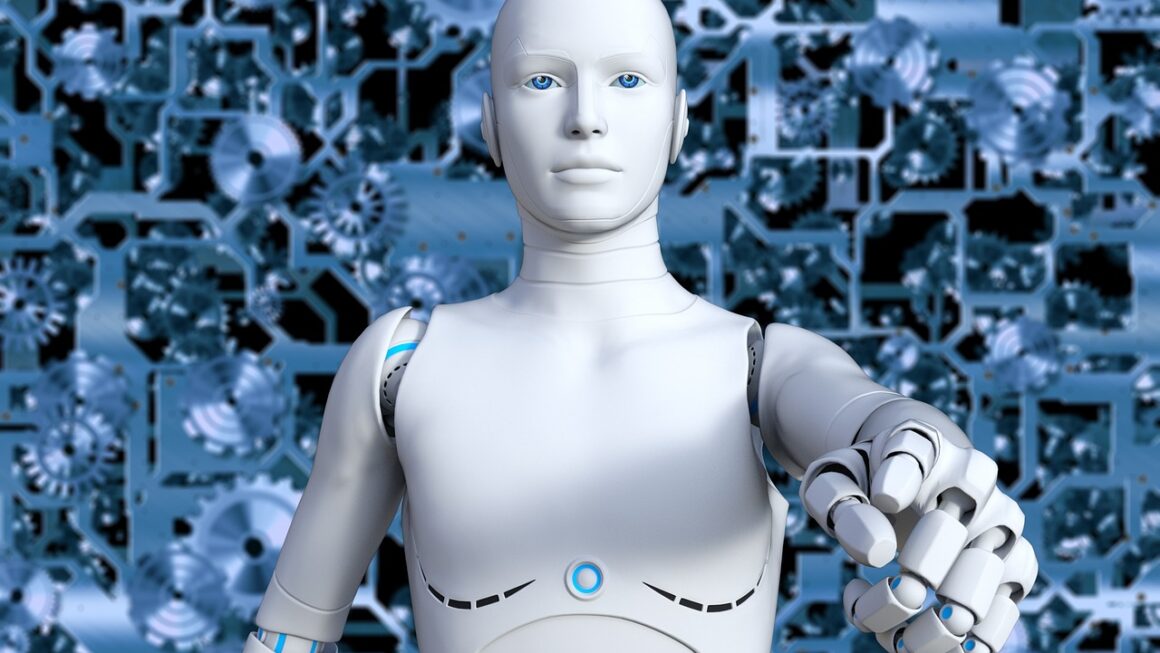Machine learning, once relegated to the realm of science fiction, is now a pervasive force shaping our everyday lives. From personalized recommendations on Netflix to fraud detection systems safeguarding our financial transactions, machine learning algorithms are constantly working behind the scenes. This blog post will delve into the core concepts of machine learning, exploring its various types, applications, and future potential.
What is Machine Learning?
Defining Machine Learning
Machine learning (ML) is a subfield of artificial intelligence (AI) that focuses on enabling computers to learn from data without being explicitly programmed. Instead of relying on hard-coded rules, machine learning algorithms identify patterns, make predictions, and improve their accuracy over time through experience. In essence, machine learning empowers systems to learn and adapt from data, much like humans do.
How Machine Learning Works
The core process of machine learning involves feeding an algorithm large amounts of data and allowing it to identify relationships and patterns within that data. These patterns are then used to build a model that can make predictions or decisions on new, unseen data. The model’s accuracy is continuously evaluated, and adjustments are made to improve its performance. This iterative process of learning and refinement is what sets machine learning apart from traditional programming.
Key Components of a Machine Learning System
A typical machine learning system consists of several key components:
- Data: The raw material from which the algorithm learns. High-quality, relevant data is crucial for building accurate and reliable models.
- Algorithm: The set of rules and procedures used to identify patterns in the data. Different algorithms are suited for different types of problems.
- Model: The representation of the patterns learned from the data. This model is used to make predictions or decisions on new data.
- Evaluation: The process of assessing the performance of the model. Metrics such as accuracy, precision, and recall are used to measure the model’s effectiveness.
- Optimization: The process of adjusting the model’s parameters to improve its performance. This involves techniques such as gradient descent and cross-validation.
Types of Machine Learning
Machine learning encompasses a wide range of techniques, each with its own strengths and weaknesses. Here are some of the most common types:
Supervised Learning
In supervised learning, the algorithm is trained on a labeled dataset, where each data point is associated with a known outcome or target value. The algorithm learns to map the input features to the output labels, allowing it to predict the outcome for new, unseen data.
- Examples: Image classification (identifying objects in images), spam filtering (classifying emails as spam or not spam), and price prediction (predicting the price of a house based on its features).
- Algorithms: Linear regression, logistic regression, support vector machines (SVMs), decision trees, and random forests.
Unsupervised Learning
Unsupervised learning deals with unlabeled data, where the algorithm must discover patterns and structures on its own. This type of learning is often used for tasks such as clustering, dimensionality reduction, and anomaly detection.
- Examples: Customer segmentation (grouping customers based on their behavior), anomaly detection (identifying fraudulent transactions), and topic modeling (discovering topics in a collection of documents).
- Algorithms: K-means clustering, hierarchical clustering, principal component analysis (PCA), and autoencoders.
Reinforcement Learning
Reinforcement learning involves training an agent to make decisions in an environment to maximize a reward. The agent learns through trial and error, receiving feedback in the form of rewards or penalties for its actions.
- Examples: Game playing (training an AI to play chess or Go), robotics (training a robot to navigate a complex environment), and resource management (optimizing the allocation of resources in a data center).
- Algorithms: Q-learning, deep Q-networks (DQN), and policy gradient methods.
Semi-Supervised Learning
Semi-supervised learning is a hybrid approach that combines labeled and unlabeled data. This can be useful when labeled data is scarce or expensive to obtain.
- Examples: Document classification (classifying documents with only a small number of labeled examples), image recognition (recognizing images with limited labeled data), and speech recognition (recognizing speech with limited transcribed data).
- Algorithms: Self-training, label propagation, and generative models.
Applications of Machine Learning
Machine learning is transforming industries across the board. Here are some notable examples:
Healthcare
- Diagnosis and Treatment: Machine learning algorithms can analyze medical images to detect diseases, predict patient outcomes, and personalize treatment plans.
- Drug Discovery: Machine learning can accelerate the drug discovery process by identifying promising drug candidates and predicting their efficacy.
- Predictive Analytics: Machine learning can predict hospital readmissions, identify high-risk patients, and optimize resource allocation. For example, Google’s DeepMind Health is using ML to help clinicians detect acute kidney injury (AKI) up to 48 hours earlier than traditional methods.
Finance
- Fraud Detection: Machine learning algorithms can identify fraudulent transactions in real-time, protecting financial institutions and their customers.
- Risk Management: Machine learning can assess credit risk, predict loan defaults, and optimize investment portfolios.
- Algorithmic Trading: Machine learning can automate trading strategies, enabling faster and more efficient trading decisions.
Retail
- Personalized Recommendations: Machine learning algorithms can analyze customer behavior to provide personalized product recommendations.
- Demand Forecasting: Machine learning can predict future demand for products, allowing retailers to optimize inventory management.
- Customer Segmentation: Machine learning can segment customers based on their purchasing patterns, enabling targeted marketing campaigns. For example, Amazon leverages collaborative filtering to recommend products based on a user’s purchase history and the purchases of similar users.
Manufacturing
- Predictive Maintenance: Machine learning algorithms can predict equipment failures, allowing manufacturers to schedule maintenance proactively and minimize downtime.
- Quality Control: Machine learning can automatically inspect products for defects, ensuring high-quality standards.
- Process Optimization: Machine learning can optimize manufacturing processes, improving efficiency and reducing waste.
The Future of Machine Learning
Trends and Developments
The field of machine learning is rapidly evolving, with new trends and developments emerging constantly. Some notable trends include:
- Deep Learning: A powerful subset of machine learning that uses artificial neural networks with multiple layers to learn complex patterns.
- Explainable AI (XAI): Focuses on making machine learning models more transparent and understandable, allowing users to understand why a model made a particular prediction.
- AutoML: Automates the process of building and deploying machine learning models, making it easier for non-experts to use machine learning.
- Edge Computing: Deploying machine learning models on edge devices, such as smartphones and IoT devices, enabling real-time decision-making and reducing latency.
Challenges and Opportunities
Despite its immense potential, machine learning also faces several challenges:
- Data Bias: Machine learning models can perpetuate and amplify biases present in the training data.
- Lack of Interpretability: Some machine learning models, particularly deep learning models, are difficult to interpret, making it challenging to understand why they make certain predictions.
- Ethical Concerns: Machine learning raises ethical concerns related to privacy, fairness, and accountability.
Addressing these challenges will be crucial for realizing the full potential of machine learning and ensuring its responsible development and deployment.
Conclusion
Machine learning has already revolutionized numerous industries and is poised to continue transforming the world in profound ways. By understanding the core concepts, types, and applications of machine learning, individuals and organizations can harness its power to solve complex problems, drive innovation, and create new opportunities. As the field continues to evolve, it is essential to stay informed about the latest trends and developments and to address the ethical and societal implications of this powerful technology. Embracing machine learning responsibly will unlock its potential to create a brighter future for all.




